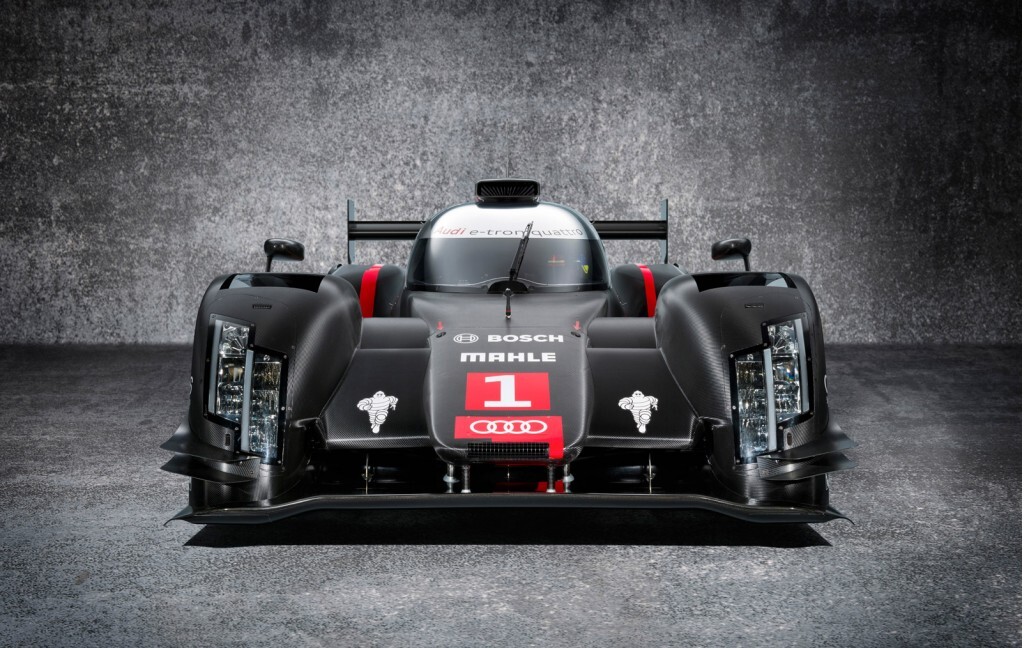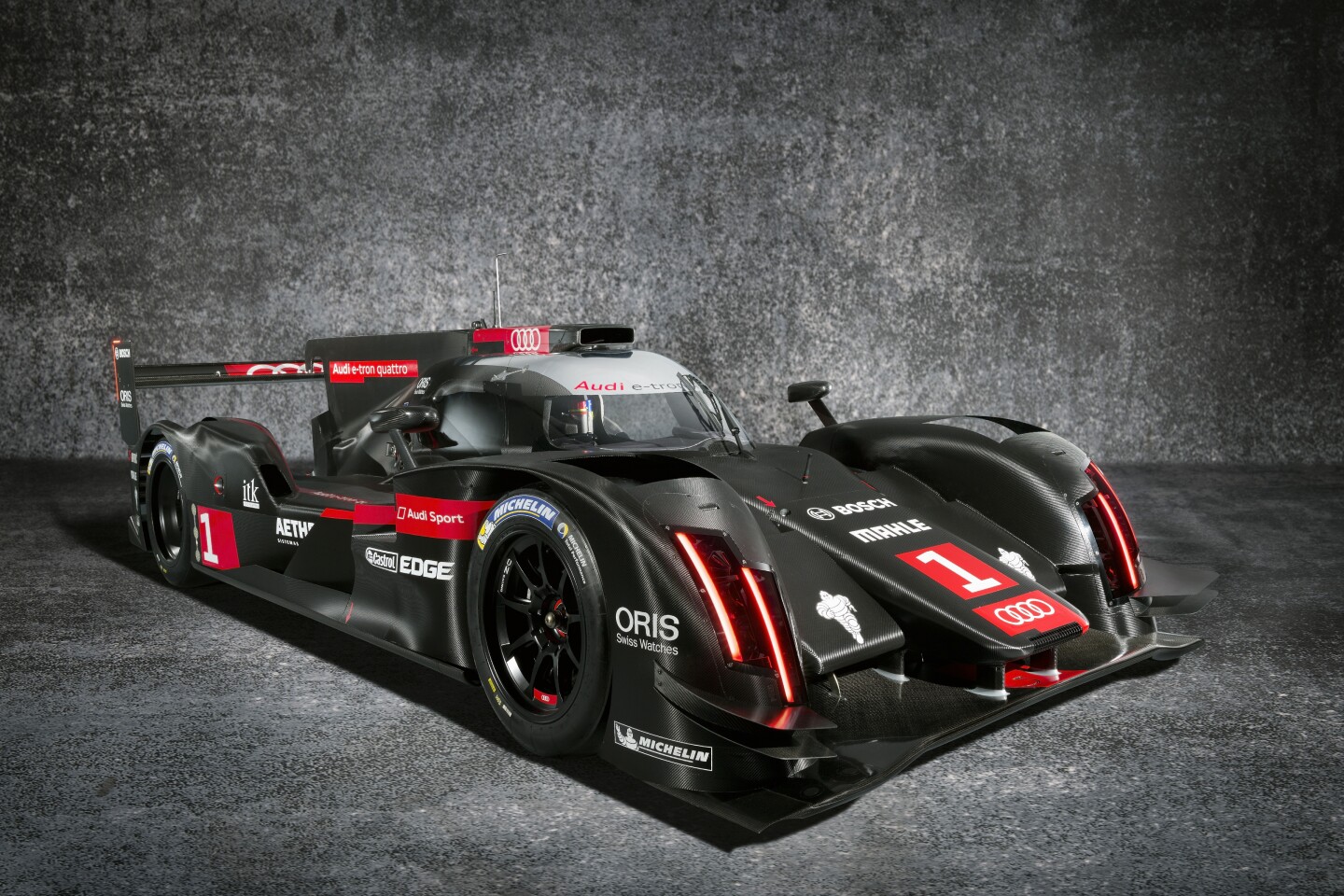First introduced into rally racing in 1980, Audi’s AWD Quattro system has become synonymous with all wheel drive performance. Its AWD activities have since shifted from that of a rally-only diet to the arena endurance racing in the form of the championship winning R18 e-tron Quattro. For 2014, the Le Mans champion is back to defend its title packing more than just new laser headlights – it has a completely redesigned dual-hybrid system in hand.
In 2012, Audi became the first manufacturer to win both the Le Mans 24 Hour endurance race and the FIA World Endurance Championship (WEC) using its Quattro all-wheel drive system. The R18 scored another victory last year and for 2014, in order to meet new regulations and remain competitive, the car has undergone significant modifications to its hybrid system, engine and drivetrain.
Until this year rules set by the FIA allowed Audi to engage its AWD system only above 75 mph (120 km/h) in a race. For 2014 the rule has been removed, thus allowing the German racer to modify the R18’s hybrid system to get the most out of low speed scenarios.
“We’ve developed the entire hybrid drive from scratch again for 2014,” explains Dr. Martin Mühlmeier, Head of Technology at Audi Sport. “Specifically, the system is even lighter and more efficient than before.”

One of the bigger challenges for Audi for the 2014 season is a new rule requiring teams to work with 30 per cent less fuel. So for the upcoming season, in addition to the highly tuned mid-engine V6 TDI, Audi has not one but two hybrid power systems on board.
First up is the R18’s revised Motor Generator Unit (MGU), which is essentially a KERS like system that powers the front wheels. Integrated into the car’s forward monocoque, the MGU unit is connected to the front wheels by a longitudinally mounted front axle. Kinetic energy captured by the MGU during braking is stored in a newly designed flywheel energy storage system (FESS) located inside the cockpit. When it's time to turn for a short term acceleration burst, the energy is converted again by the MGU and sent to the front wheels.

Out back resides a new energy recovering turbocharging system. Similar to technology used in Formula One, heat from the turbocharger is captured by an electrical recovery unit, that in turns converts it to electricity, then stores it in the FESS. This stored electricity, which can be used by the MGU unit as it deems appropriate, and like the Formula 1 cars, can be used to pre-spool the turbocharger. Pre-spooling means less turbo-lag, means quicker acceleration, means faster out of corners, means more trophies, ultimately resulting in bigger homes and nicer boats for the winning drivers.
Unlike Audi’s other earlier Quattro cars that relied on traditional mechanical differentials to manage power to the front and rear wheels, the R18 e-tron uses an electronic control unit that determines best power splitting ratios between fore and aft. Using data and inputs from various sensors the control unit, in combination with driver inputs, decides when and where power should be allocated for optimal traction and performance.

Safety regulations for racers like the R18 have also been revised for 2014 requiring teams to meet even more stringent rules. For instance the R18's carbon fiber monocoque now has more layers in order to increase structural tolerances and reduce unwanted items from entering the cockpit space. And to keep wheels from flying off and injuring spectators or other drivers in accidents, wires connected to key suspension points have been built in.
In order to meet new body regulations, the R18 for the coming season will be slightly narrower and taller, but with a larger cockpit. Changes to the underside of the car also means racers will have less downforce to assist them in high speed cornering scenarios. Endurance racers will also be outlawed from using exhaust gases to "boost" the diffuser.
The 2014 Audi’s R18 will make it's first racing appearance on April 20 at Silverstone before looking to retain its 24 Hours of Le Mans title on June 14 and 15.
Source: Audi Motorsport












